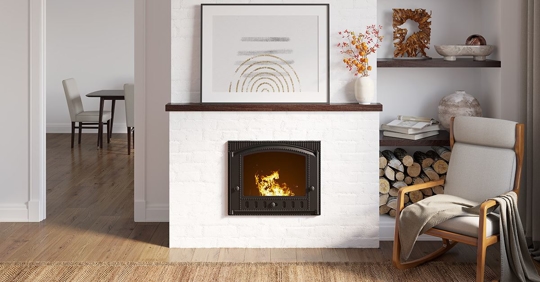When the time comes to upgrade or replace your heating system, it pays to know what your options are. Often, homeowners go with the same type of system they currently have in their homes, but there are heating options out there that might be more reliable, more cost-efficient, and much more sustainable.
We put together this list, so you know all your options before making your choice for an upgrade or replacement.
Different Types of Home Heating Systems
While furnace heat is the most traditional choice in the U.S., there are several modern heating, ventilation, and air conditioning (HVAC) systems that can effectively heat your home and may be more convenient or cost-effective for you.
If you’re thinking about having a new heating system installed, it helps to know what’s out there to choose from that may serve as a true upgrade.
- Air-source heat pumps. These versatile systems can either heat or cool your home, serving as both your heater and your air conditioner. Because they transfer heat from the air instead of generating it by burning gas or propane, they are many times more efficient than furnaces and come with generous federal incentives due to their low carbon footprint.
- Ductless mini-splits. A type of air-source heat pump that eliminates the need for expensive ductwork throughout the house, where the home is heated and cooled via wall-mounted vents that are individually controlled.
- Furnaces. Whether it sources its energy from burning natural gas, propane, heating oil, or using electricity, a furnace heats your home by dispersing heated air through ductwork. Depending on your source of energy, it can be expensive to run and those with allergies may have issues with the dust and particles stirred in the air.
- Boilers. Often seen as a more dated option of heating, boilers heat water and distribute it through radiators in each room, heating the home. This can be an expensive option, but it’s easier on individuals with allergies than forced air.
- Electric baseboard heat. These heater units are installed on the wall’s baseboard. They take in cold air, use electricity to heat it, and release the air out of a slot above the board.
There has never been a better time to consider switching to a heat pump. The Inflation Reduction Act offers rebates and tax incentives for homeowners interested in making these upgrades, so it may be worth considering replacing your furnace with one of these more efficient options.
Related Content: How to Figure out the Age of Your Furnace
Best Alternative Home Heating Options
Before you limit yourself to traditional home heating options, let’s review various alternative types of heaters that could better fit your home and lifestyle.
- Pellet stoves. These heaters are high in efficiency, clean burning, and can heat an entire home. The pellets are made up of organic materials such as corn husks and nutshells. While it’s simpler to install than a fireplace or woodstove, pellet stoves do require regular maintenance. You may need to refill the pellets daily, clean the stove weekly, and arrange a yearly professional cleaning.
- Geothermal heat pump. This type of heater transfers heat from the ground. Thanks to consistent ground temperatures, it’s even more efficient than its air-source counterpart. Though inexpensive to operate and quite long-lasting, they require a pricey, complicated installation. You either need to drill a hole on your property for the buried heat exchange coils or install them in a body of water.
- Radiant floor heating. This system heats by running hot water through pipes installed inside the floor. Since air isn’t being moved in order to heat the home, this system is good for those who deal with allergies. The downside is that your floor would have to be removed in order to install this type of heater. It’s often better for new constructions or big remodels.
- Active solar heating. This type of heater uses solar energy to heat water or air that is then transferred to a fan for distribution or a holding tank for storage.
Get Expert HVAC Services in Cedar Park, TX
The type of home heater you choose affects your energy costs, the comfort of your home, and your carbon footprint, and could be easier or harder on those with allergies.
As you sift through the different types of home heating and cooling systems to find one that suits your space, trust Precision Heating & Air with your HVAC or heat pump installation in Austin, TX. Call us at 512-379-6385 or request service online to get started.

